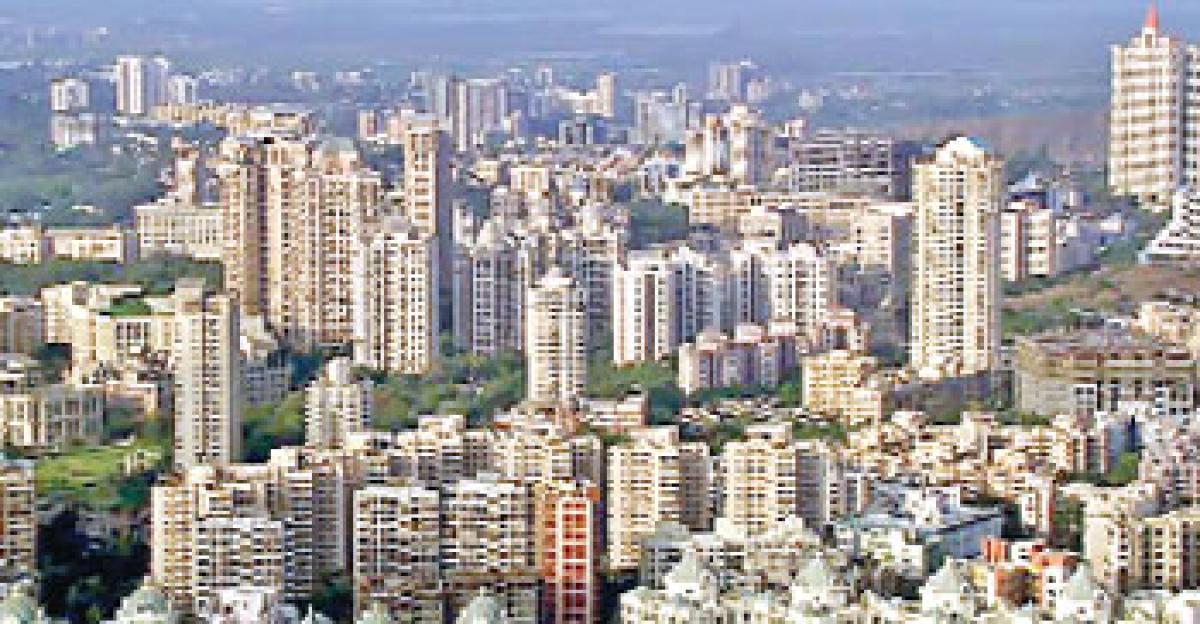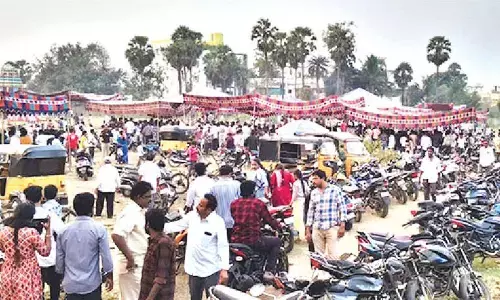UPSC: URBANISATION

The share of urban population in India’s total population has increased from 27.81 per cent in 2001 to 31.16 per cent in 2011 census. This is an increase of 3.35 percentage points over a decade. Though this is not significant as compared to the countries with a similar level of per capita income, the fact remains that urbanisation is catching up in India.
 The topic of urbanisation has been an important one and questions have regularly appeared on it, as recently as in the UPSC examinations of 2014 (General Studies, Paper 1, Question no: 1). A detailed essay on this topic is being included for the benefit of civil service aspirants
The topic of urbanisation has been an important one and questions have regularly appeared on it, as recently as in the UPSC examinations of 2014 (General Studies, Paper 1, Question no: 1). A detailed essay on this topic is being included for the benefit of civil service aspirants
The share of urban population in India’s total population has increased from 27.81 per cent in 2001 to 31.16 per cent in 2011 census. This is an increase of 3.35 percentage points over a decade. Though this is not significant as compared to the countries with a similar level of per capita income, the fact remains that urbanisation is catching up in India.
Significant trend
The census data also indicate the significance of this demographic transition. For the first time since independence, the decadal increase in the size of urban population(90.99 million people over 2001 2011 ) was GREATER THAN THAT OF THE RURAL POPULATION(90.47 MILLION).The urban population in India increased from 285 million in 2001 to 380 million in 2011. The estimates suggest that the urban population will rise to 600 million in 2030 when the overall population would increase to 1.4 billion.
The process of urbanisation is in progress even in smaller states. The share of urban population is nearly half in states like Tamil Nadu and Kerala. The industrialised states like Maharashtra and Gujarat are also showing a similar demographic transition.
Possibilities for entrepreneurship and employment increase when urban concentration takes place, in contrast to the dispersed and less diverse economic possibilities in rural areas. This enables faster inclusion of more people in the growth process and therefore more inclusive. There is synergistic relationship between rural prosperity, and the continuum of urban development from small towns through larger cities to metros. A holistic approach to spatial development is needed for inclusive growth
Key challenge
The planning commission has rightly described the managing urban transition as one of the four key challenges facing the Indian economy during the 12th five year plan. The other three challenges are managing energy security, managing water economy, managing environment.
Driving Factors
Demographers analyse that the phenomenon of urbanisation in India is due to three factors. Firstly, the natural increase in population within their urban areas, the migration of people from rural to urban areas, and the reclassification of urban settlements from rural to urban. The popular notion is that the rural urban migration is primarily responsible for the phenomenon of urbanisation in India. But, a perusal of census 2011 data reveals that all the three factors have contributed the phenomenon of growing number of people living in urban areas.
The re-classification factor is more responsible for the demographic change during last decade. The number of urban settlements has increased from 5161 in 2001 to 7935 in 2011, an increase of 54 per cent. While the overall urban population has increased by 32 per cent during the last decade, the number of urban agglomeration registered an increase of 54 per cent indicating the importance of the re-classification factor as compared to the other two factors. The census towns increased by 2532 while statutory towns increased by only 242.
The employment and unemployment data of the National Sample Survey (NSS) of 2009-2010 reveals that rates of employment generation have slowed down dramatically in both rural and urban areas. The rise in urban population is levying enormous pressure on urban infrastructure. The combination of increasing urban population, inadequate urban infrastructure and sluggish growth in employment in urban areas create a precarious situation
According the 2011 census, an area is classified as urban if it fulfills any one of the two conditions. Firstly any area that comes under a statutory urban local body like corporation or a municipality. This is defined as statutory town. Secondly an area is also classified as an urban area if it contains a population of 5000 or above, has a density of at least 400 persons per square kilometer and 75 per cent of male work force employed in non agricultural occupations. This kind of a location n is categorised as census town.
There has been a significant increase in the number of census towns. These census towns account for more than 90 per cent of the increase in the total number of urban settlements.
Managing the urban transition
The above data reveals that their significant increase in urban population has mainly occurred in the census towns which do not have proper institutional urban governance structures. In the absence of such statutory arrangements creation and management of urban infrastructure and urban utilities like drinking water, electricity, sanitation etc., remains to be a major challenge. These census towns should also get proper recognition in the urban policy formulation and urban planning.
Urban governance
Noted economist Jayati Ghosh said, it could well be that currently these census towns are simply off the radar of most policy makers and implementers, because they so not fall into the statutory definition of urban and are still included in rural areas for administrative purposes. There are 3894 such towns in India, according to 2011 census.
The already classified statutory towns also face many problems. The funds, functions and functionaries have to be transferred to urban local bodies. The provisions of 74th constitutional amendment that accord statutory status to urban local bodies are yet to be fully implemented. Apart from the resource transfer, the capacity building in the urban governance institutions is the need of the hour.
Urban employment
The employment and unemployment data of the National Sample Survey (NSS) of 2009-2010 reveals that rates of employment generation have slowed down dramatically in both rural and urban areas. The rise in urban population is levying enormous pressure on urban infrastructure. The combination of increasing urban population, inadequate urban infrastructure and sluggish growth in employment in urban areas create a precarious situation.
This not only leads to mushrooming of urban slums but also and developing livable cities a daunting task. Such a demographic and economic situation also provide a breeding ground for socially divisive forces .The Planning Commission in the 12th plan said that creating durable quality employment should be the important objective of the planning process. The informal sector mainly provides the livelihood for the urban poor. The vulnerabilities in this sector need to be addressed. The social security of the urban poor assumes much greater significance.
The Planning Commission suggests formation and growth of formal enterprises may be facilitated too to enlarge opportunities of good employment. The revival of manufacturing sector would strengthen the livelihood opportunities within smaller towns resulting in dispersal of urban growth. There is a demand for National Urban Employment Guarantee programme similar to National Rural Employment Guarantee programme. The informal sector should get adequate importance in planning of urban spaces. The urban youth should be imparted with skills relevant for contemporary job market.
Stimulant for inclusive growth
The urbanisation was perceived as negative demographic trend in the past. But, there has been a paradigm shift in the understanding of its role in the development process. The Approach paper to 12th plan of the planning commission said the process of urbanisation is a natural process associated with growth. Agglomeration and densification of economic activities (and habitations) in urban conglomerations stimulates economic efficiencies and provide opportunities for earning livelihoods.
Possibilities for entrepreneurship and employment increase when urban concentration takes place, in contrast to the dispersed and less diverse economic possibilities in rural areas. This enables faster inclusion of more people in the growth process and therefore more inclusive. There is synergistic relationship between rural prosperity, and the continuum of urban development from small towns through larger cities to metros. A holistic approach to spatial development is needed for inclusive growth.
Urban infrastructure
The infrastructure of India’s present towns is very poor. The overwhelming share of census towns in the overall increase in urban population coupled with lack of proper democratic decentralisation to strengthen urban local bodies has further aggravated the infrastructural deficit. The sluggish urban employment growth and the mushrooming of urban slums have further worsened the infrastructural situation in urban India.
Therefore, the urgent task is to step up investment in new urban infrastructure assets and maintenance of assets. The high power committee appointed by the ministry of urban development , Government of India estimated that total of about Rs. 40 lakh crore ( 2009-10 prices ) as capital expenditure amend about Rs. 20 lakh crore for operation and maintenance for the new and the old assets will be required over the next 20 years.
Apart from the hard infrastructure, soft infrastructure should also be strengthened along with the strengthening of governance structures, the deficiencies in the capacity of human and organisational resources to deal with the challenges of urbanisation must be addressed.
Long term planning
The Planning Commission calls for adequate emphasis to long term strategic urban planning to ensure that India’s urban management is not limited to renewal of cities. There is a need plan for new cities. The satellite towns with proper connectivity would help in urban decongestion.
Focus on urban poor
The urban poor suffer from multiple deprivations such as lack of access to safe drinking water, basic sanitation, education, health care, social security, housing etc. The poor and the vulnerable are not sufficiently represented in the urban governance process too.
Environmental sustainability
The urban development process should be environmentally sustainable. The National Mission on Sustainable Habitats seeks to make cities sustainable through improvements in energy efficient buildings management of solid waste and shift to public transport. The planning commission estimates that less than 25 per cent of urban population at present depends on public transport.
This needs to be improved urgently to not make urban agglomerations environmentally sustainable; but also for the conservation of energy and combating climate change. The urban mass transit including metro rail, electric buses and trams must be encouraged. The concept of Green Buildings should be embedded into the urban planning process. The building norms should accordingly reflect these concerns.
The erosion of green cover, the congestion of cities, the growing construction of activity, the large scale emission of green house gases and chloro floro carbons have all contributed to the environmental degradation of cities. The process of making cities environmentally sustainable demand many more creative initiatives. They should include improved water management, recycling of waste water, equity and efficiency in water use.
New challenges
The changes in urban demography and economy portray new challenges. The growth of real estate especially the operation of speculative forces made housing a serious problem. The community housing schemes need to be encouraged. The demographic transition leads to an increased number of elderly people. Safe housing and care of elderly citizens is also becoming a major concern in Indian cities. The United Nations Development Programme (UNDP) projected that there will be a big gap between the supply of caring services.
Changing economic landscape
The Approach paper to the 12th plan observed that the urban centres and their peripheries should become the launch pads for expansion of manufacturing and modern services. Economies and innovations within them should provide the country with the desired global competitive edge in larger number of products. In the era of globalised services sector, cities increasingly occupy significant role in the global market place. Thus, urban areas with their diverse social and economic landscape offer employment opportunities for variety of skills and talents. The urban centres offer opportunities for the promotion of tourism, development of science and technology, innovation and diverse production base.
Financing urban development
The comprehensive urban development strategy requires provision of a wide range of basic services and amenities for the urban population. They include water supply, sewage, solid waste management, storm water drains, urban roads, urban transport, urban street lighting, housing, urban disaster management etc. This requires massive financial resources. Apart from the budgetary resources,
innovative means resource mobilisation should get the importance it deserves. The Planning Commission advocates a policy environment for fostering cost saving innovations and mobilisation of resources through innovative methods of financing. The 11th plan gave importance to public private partnership. The 12th plan called for public private peoples partnership models. The planning commission also suggests various measures for improving the own resource mobilisation by urban local bodies.
They include betterment levy, conversion of land dues charges, external development charges, infrastructural development charges etc. The introduction of cost to serve principle for urban services at least for the affordable sections is attempted to increase the resource base of urban local bodies. The other suggestions include attracting private investment, unlocking the value of land for financing infrastructure projects with intelligent use of impact fees, better management of property taxes, etc.
The public, private people partnership modes are to be encouraged in recycling of water, drinking water supply, solid waste treatment, treatment of urban sewage etc. The international experience suggests that this strategy not only improves resource position of urban local bodies but also improves the efficiency delivery of urban services.
(The author is the Editor of The Hans India newspaper. He is also associated with the Department of Journalism, Osmania University and is on the guest faculty of Birla Institute of Technology & Science, Pilani (Hyderabad), National Police Academy, National Academy of Administration, Mussorie and MCR Institute of Human Resources Development, Hyderabad. He has also been coaching civil service aspirants for over two decades.)
By:Prof K Nageshwar

















